Mumbai has always been the city of dreams and of new beginnings. People come here from different corners of the country to start a new life and to achieve their dreams. Unlike other cities in India, Mumbai offers a fast-pace lifestyle that keeps people busy. Festivities are an integral part of Mumbai and Ganesh Chaturthi is one of the widely celebrated festivals in the city. It is during this time of the year that Mumbai Ganesh mandals are seen all over the city.
The festival celebrates the birth of Lord Ganesha who is the God of New Beginnings and the Remover of Obstacles. For this, Ganesha clay idols are installed privately in homes and publicly in elaborate pandals. The festival ends on the tenth day with the immersion of the idol in the sea or river. The festival is celebrated on a huge scale similar to Durga Puja pandals in Kolkata.
Mumbai Ganesh Mandals History:
The exact date of the beginnings of this festival is unknown. However, there are historical records that reveal that the great Maratha ruler, Chhatrapati Shivaji Maharaj promoted and celebrated the festival (from 1630 to 1680). Subsequently, Lord Ganesha became the family deity of the Peshwas. However, after the end of the Peshwa rule, this festival turned into a family affair from 1818 to 1892.
The Indian Rebellion of 1857 (Sepoy Mutiny) had already struck fear into the hearts of the British East India Company. To avoid any further damage, the British Empire had passed a series of ordinance banning public assemblies of social and political nature.
One of the eminent freedom fighters, Bal Gangadhar Tilak, commonly known as Lokmanya gained popularity by then. In 1892, Bhausaheb Laxman Javale, installed the first sarvajanik Ganesh idol in Pune. The following year, in 1893, Tilak applauded this act in his newspaper Kesari. He then decided to use this mass community event to bypass the ban. The festival was further used to political and intellectual discourse, plays and concerts and poetry recitals.
More than a century later, the festival has become one of the most celebrated festivals in India. There are thousands of Mumbai Ganesh mandals that bring idols in different shapes and sizes. Similar scenes can be seen in Pune as well as different Pune Ganesh mandals celebrate Ganesh Chaturthi as well. Mumbai Ganesh mandals organize some of the most creative idols and stage decorations and therefore you should definitely not miss them.
Here are 7 Mumbai Ganesh mandals that you should not miss.
Lalbaug Cha Raja (King of Lalbaug)
If you are talking of Mumbai Ganesh mandals this one needs no introduction. Established in 1934 at the Lalbaug Market, Lalbaugcha Raja mandal managed to gain more popularity in 1990s and have managed to attract more number of people and devotees than any other mandals in the city.
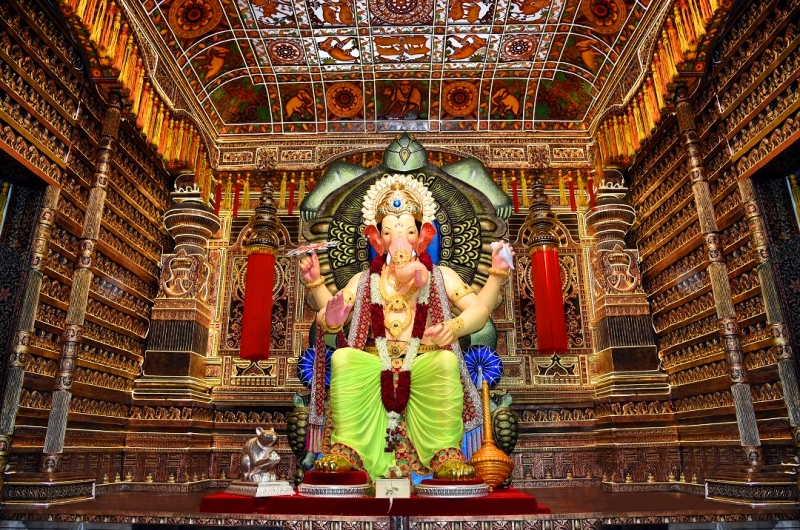
This Ganesha idol is also known as Navasacha Ganpati (one who fulfills) and hence it receives the maximum attention. On an estimate, around one million people visit this pandal during the ten-day festival.
Mumbai Cha Raja (King of Mumbai)
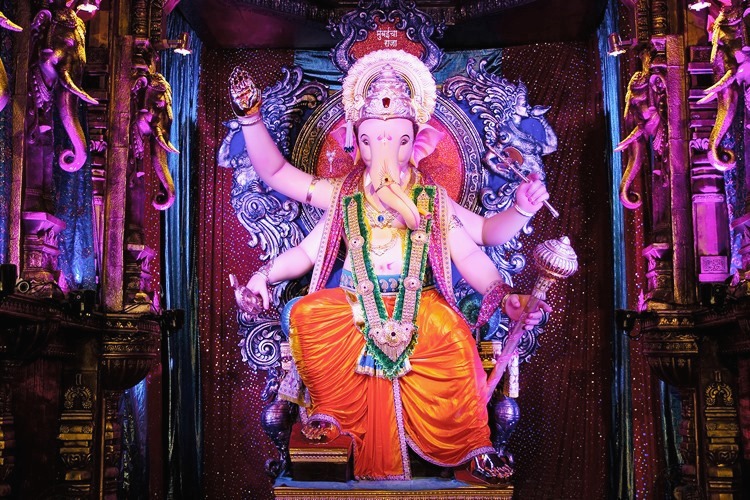
A couple of lanes from the Lalbaug Cha Raja mandal in Ganesh Galli resides Mumbai Cha Raja. Established in 1928, Ganesh Galli Mumbai Cha Raja (King of Mumbai) is among the prominent Mumbai Ganesh mandals. It remains one the oldest Mumbai Ganesh mandals in formed originally for the benefit of mill workers.
Khetwadi Cha Ganraj (King of Khetwadi)
It would be hard to ignore 12th Lane Khetwadi Cha Raja if we are focusing on Mumbai Ganesh mandals. Established in 1959 Khetwadicha Ganraj gained popularity during early 2000s. It was during this time that the mandal came up with the tallest Ganesh idol (40 feet) that dwarfed all others that year.
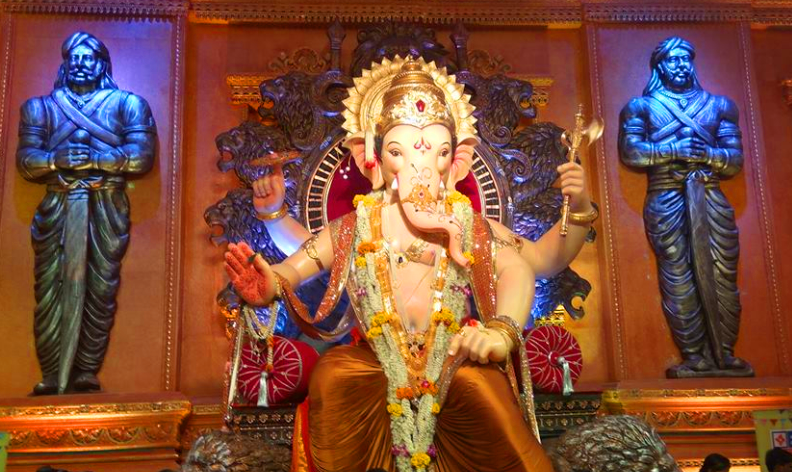
The mandal has a penchant for grand decorations and tall idols in various forms and shapes that fascinate your imagination. If you love grand and royal decors, this mandal must be on your list.
G.S.B. Seva Ganesh Mandal
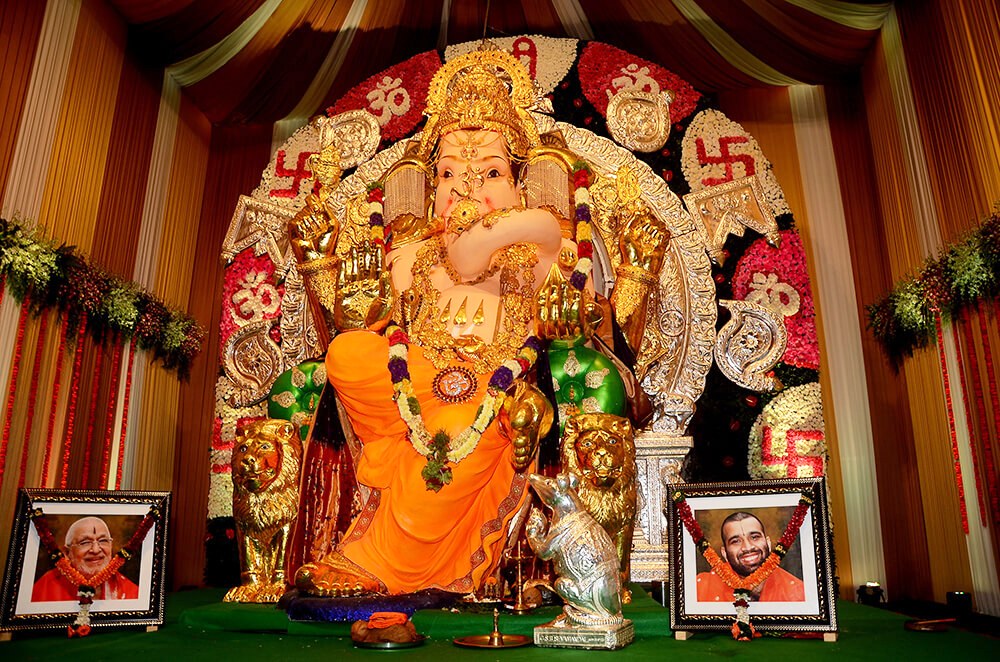
If you going pandal hopping to explore top Mumbai Ganesh mandals G.S.B. Seva Ganesh mandal must be on your list. Established in 1955, it was started by Gowd Saraswat Brahman (GSB) community of Karnataka. The best part about this Ganesha idol is that it is eco-friendly. The initial Ganesh idols here were only 14 inch in size. However, over the years, the number of devotees has grown allowing the mandal to augment the celebrations.
Andheri Cha Raja (King of Andheri)
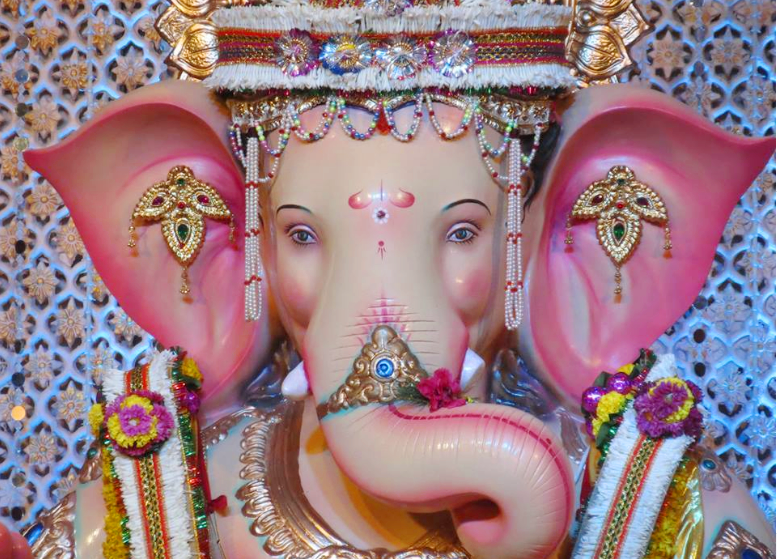
In the last few years, a major part of the city’s population has moved to suburbs and therefore the Andhericha Raja (King of Andheri) has managed to gain more popularity especially for the people living close to Andheri. The mandal was established in 1966 by mill and factory workers who moved to suburbs from Lalbaug. Over the years, this has become one of the prominent Mumbai Ganesh mandals in the city.
Chinchpokli Cha Chintamani
Established in 1920, Chinchpokli Cha Chintamani is among the second oldest Mumbai Ganesh mandals. The Chinchpokli Sarvajanik Utsav Mandal was started by a group of 20-25 young men. Initially, the idols installed here were only 2-3 feet in height. However, things have changed today considering the fanfare it has.
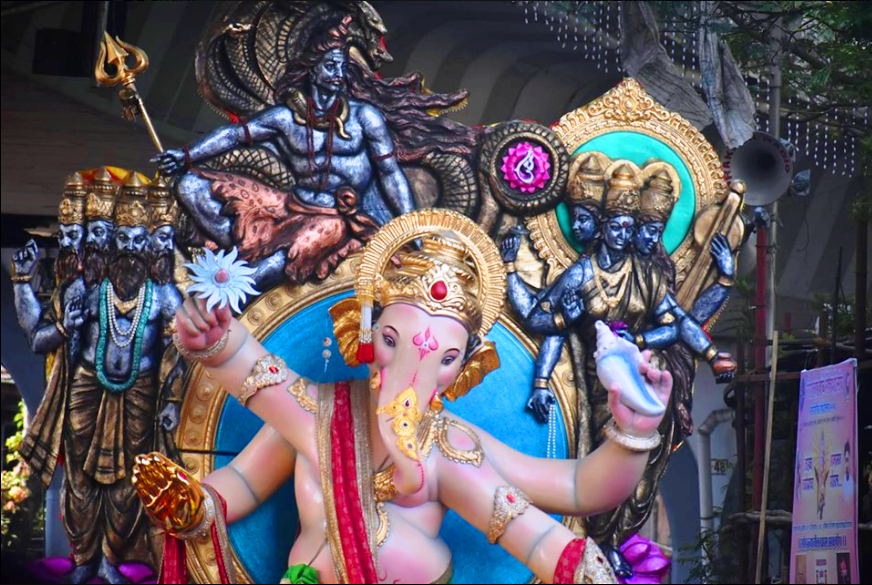
The Chinchpokli Cha Chintamani has a huge number of devotees. The mandal is close to Lalbaug Cha Raja and Mumbai Cha Raja and hence comparisons are inevitable.
Girgaon Cha Raja (King of Girgaon)
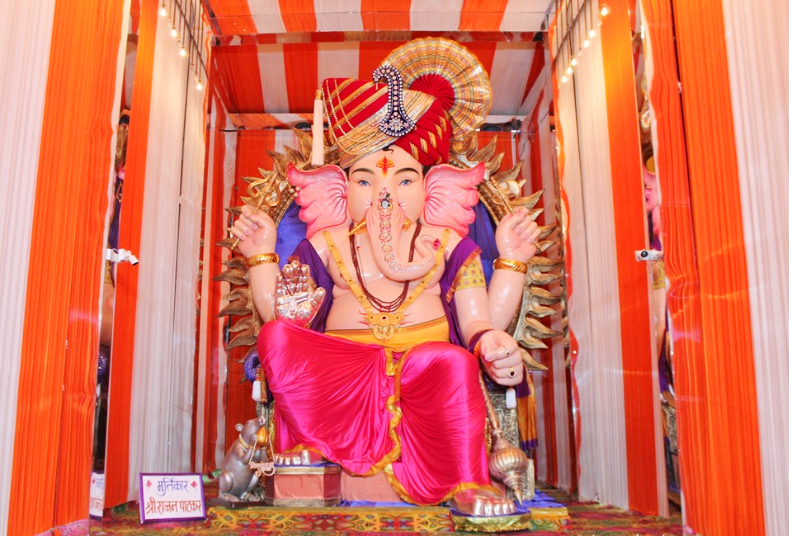
When talking of Mumbai Ganesh mandals you definitely have to explore the Girgaon Cha Raja. This mandal is originally known as Nikadwari Lane Sarvajanik Shree Ganeshotsav Mandal. The most striking quality of this mandal is its simplicity. While most of the mandals focus on elaborate themes and sprawling decorations this one doesn’t.
Girgaon Cha Raja has won Green Ganesha and Eco-friendly Ganesha awards in the year 2011. The idol is made of pure Shadu-maati (traditional clay) that allows it to be environment friendly.
Conclusion
Exploring Mumbai Ganesh mandals is a great way to explore the culture and history of the city. These mandals also focus on different themes and contemporary topics that create awareness. Although, you might have to spend a majority of your time standing in long queues it is worth the experience.
Do share your experience of pandal hopping in Mumbai and which Ganesh mandal you like the most and why.
3 comments
Developes a Motivating Environment
Wow, amazing blog structure! How lengthy have you been blogging for? you make running a blog glance easy. The whole look of your site is fantastic, as neatly as the content!
That is an interesting way to explore an area.
Or the city.